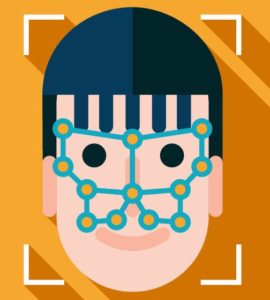
Apple made a big splash earlier this week with the revelation of the iPhone X, its first device to feature a full-size display, and its most technologically sophisticated smartphone yet. While the device sports a number of noteworthy features, the one that has captured perhaps the most attention is Face ID, the facial recognition system that replaces Touch ID on the iPhone X. It sounds straightforward enough: The system can recognize a user’s face for device unlocking and other features. But as with so many Apple technologies, there’s a lot more going on here under the surface.
Here’s what we know so far about Face ID on the iPhone X:
Infrared Imaging
It uses an infrared system to get a three-dimensional image. Called TrueDepth, the system uses a pair of infrared lights to project a 30,000-dot grid onto the user’s face, with a sensor detecting the invisible map. That data is transmitted to the iPhone X’s A11 Bionic chip, which establishes a 3D map that can be matched against a biometric template stored in a secure enclave on the chip. And because the scanning system is infrared, it can operate in the dark as well as in sunlight.
‘Attention Aware’
Apple says that Face ID’s ‘attention aware’ feature – which can be turned off – requires the user to look directly into the screen to activate Face ID, which suggests that users can’t be easily coerced into unlocking their devices by muggers, or police for that matter. And by tapping the home or power button five times, Face ID can be disabled right away, prompting the user for a passcode.
That same ‘attention aware’ feature enables the device to display certain notification on the lock screen when the authorized user is looking at it, and even to lower the volume of ringers or alarms in that case.
Accuracy
The system is accurate to one in a million users, compared to Touch ID’s one-in-50,000 accuracy. But having a twin changes those odds. Still, it can learn enough about a user’s face to be able to recognize them even if they’re wearing a hat, scarf, or other partially obscuring apparel. And because it’s so accurate, Apple is only allowing two failed unlock attempts before Face ID disables and a passcode is required.
Configuration
We also know that unlike the case with Touch ID, which can register multiple fingerprints, the iPhone X can remember only a single face at a time, meaning multiple users can’t share credentials for one device. And Face ID can be used for Apple Pay, but it can also be configured for use only with device unlocking, with a passcode required for purchases.
More details are sure to come to light as the iPhone X makes its way into the hands of reviewers and consumers, but so far Apple has already given tech experts and gadgets enthusiasts plenty to chew over.
Sources: MacRumors, Wired, TechCrunch

Follow Us